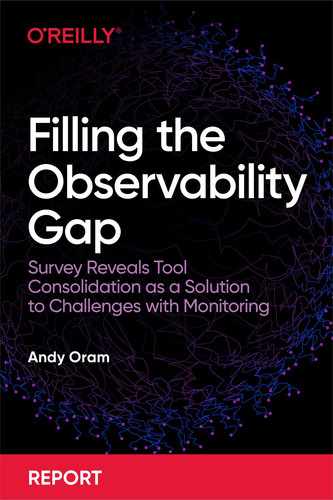Executive Summary
As organizations add systems, services, and cloud environments, they come to realize that their old ways of monitoring for failures or performance problems no longer suffice. Too many incidents are taking place without warning, and they can’t easily trace problems to causes. In short, they lack observability into their systems and applications.
We wanted to understand more about how companies are evolving from monitoring to observability and the outcomes they’re enjoying from doing so. Thus, in early 2021 we conducted a survey with more than 1,300 operations staff and managers. Lack of observability came up as their highest concern, with a high percentage of organizations of all types and sizes reporting they suffered from “blind spots—limited visibility or context into parts of our stack.” Their second highest concern was high costs related to tools and training. A third concern involved difficulties coordinating the teams who were trying to solve system and network problems.
A proliferation of monitoring tools was often identified as a major issue underpinning these three challenges. Many respondents reported that they had more tools than they wanted and that this proliferation hindered coordination when responding to incidents. Furthermore, although many prioritized consolidating monitoring tools, they were not devoting time and resources to the task.
This report outlines our research findings about monitoring and observability, explores the barriers to tool consolidation, and outlines steps for approaching consolidation.
